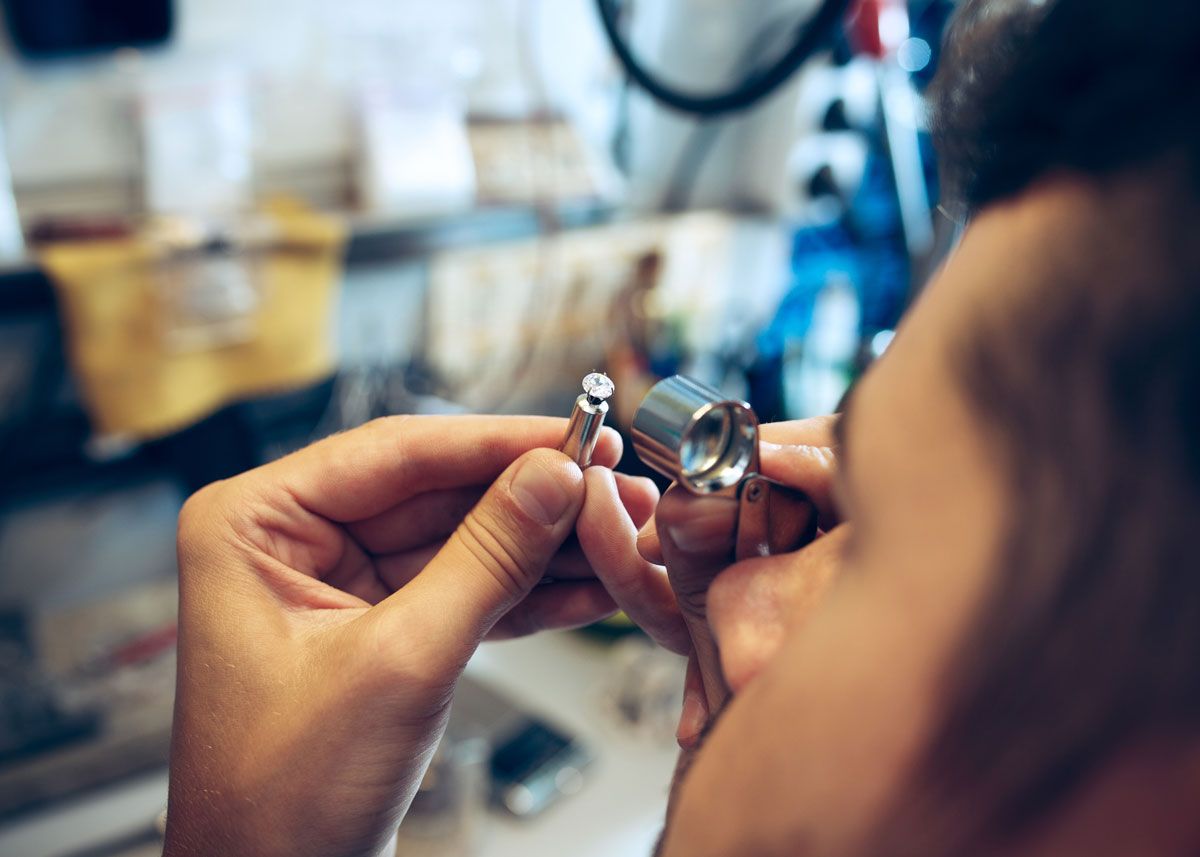
Tools of the Trade: The Loupe
One of the best things about being a jeweler is using all kinds of tools in the creation of custom jewelry. From the humble hammer to state-of-the-art machining tools and computer-aided design systems, both the low-tech and high-tech have a place in our workflow. Today we’re looking at the loupe. It’s a tool as closely associated with the jeweler as a paintbrush is with a painter. If you were asked to picture a jeweler in your mind, you might picture someone holding a ring in one hand and a little lens in the other. Even if you didn’t know what that lens was called, you know it’s a jeweler’s tool. After reading this, you’ll know a lot more than that.
What It Is
The loupe is that small magnifying glass used by jewelers. 10x magnification is the standard, but there are also 20x and 30x loupes. 10x offers the best balance between detail and focus. With higher magnifications, it’s harder to hold the jewelry steady and keep it in your field of vision, but those higher magnification loupes do have their place, such as spotting the tiniest inclusions in gemstones (more on inclusions later).
Loupes are typically painted black to reduce light and color reflections. “Color” is one of the 4Cs of diamond grading, so it’s important that a jeweler inspecting a diamond gets an accurate analysis of its color.
How It’s Used
If you’ve ever used a magnifying glass, you know it takes a little trial and error to find the distances that give you the sharpest image, both in terms of the distance to hold the magnifying glass from your face and from the object you are magnifying. The loupe works much the same way. The best way to use a loupe is up close, held steady about an inch from the eye, with the object being examined held another inch away from the loupe. That’s the main advantage of a 10x loupe over 20x: it’s easier to find that sweet spot, where you get maximum magnification and maximum focus.
When It’s Used
Loupes are most often used to inspect gemstones and to get a better look at small parts when repairing jewelry, such as earring studs and the prongs that hold gemstones in place.
Jewelers inspect gemstones for tiny flaws called inclusions. Inclusions form when gas bubbles or foreign objects get trapped inside the gemstone’s crystal matrix when the crystal is forming. Every natural diamond has inclusions, but particularly large ones affect both the beauty and the durability of a diamond.
The loupe is also useful for reading hallmarks, those tiny stamps you’ll find on the inside of your rings. Hallmarks give jewelers important information about a piece of jewelry, often including what it’s made from, who made it, where it was made, and who verified the composition of the metal. Diamonds have similar information verifying the authenticity and provenance of the diamond (that is, where it came from) printed on the girdle (the narrow band that separates the top of the bottom from the longer, conical bottom). Hallmarks on precious metals and inscriptions on diamonds are important for preventing the sale of counterfeits.
Where It Came From
While the ancient Greeks wrote treatises on optics and ancient civilizations may have used lens-like pieces of glass as magnifiers and fire-starting tools, the branch of modern physics we call “optics” is only about 500 years old. The first eyeglasses were constructed in Italy in the 1200s, while the first optical microscope and refracting telescope date to around 1600. Johannes Kepler, Isaac Newton, and Christiaan Huygens all made important advances in the field of optics throughout the 1600s. It was during that century that the first jeweler’s loupes appeared.
In 1934, the Gemological Institute of America introduced the loupe design so closely associated with the jeweler’s profession today: a 10x magnification lens inside a metal ring with a hinged cover that doubles as a handle.
Why It’s Important
Jewelers work at tiny scales. Even for the largest gemstones, facets are only millimeters across, and the inclusions that affect the beauty and value of a gemstone are often hardly visible to the naked eye. The loupe is one of the foundational tools of the modern jeweler’s profession. It’s what makes working on the most minuscule scales possible. It doesn’t look like much, but the physics and engineering knowledge that went into its creation shouldn’t be overlooked.